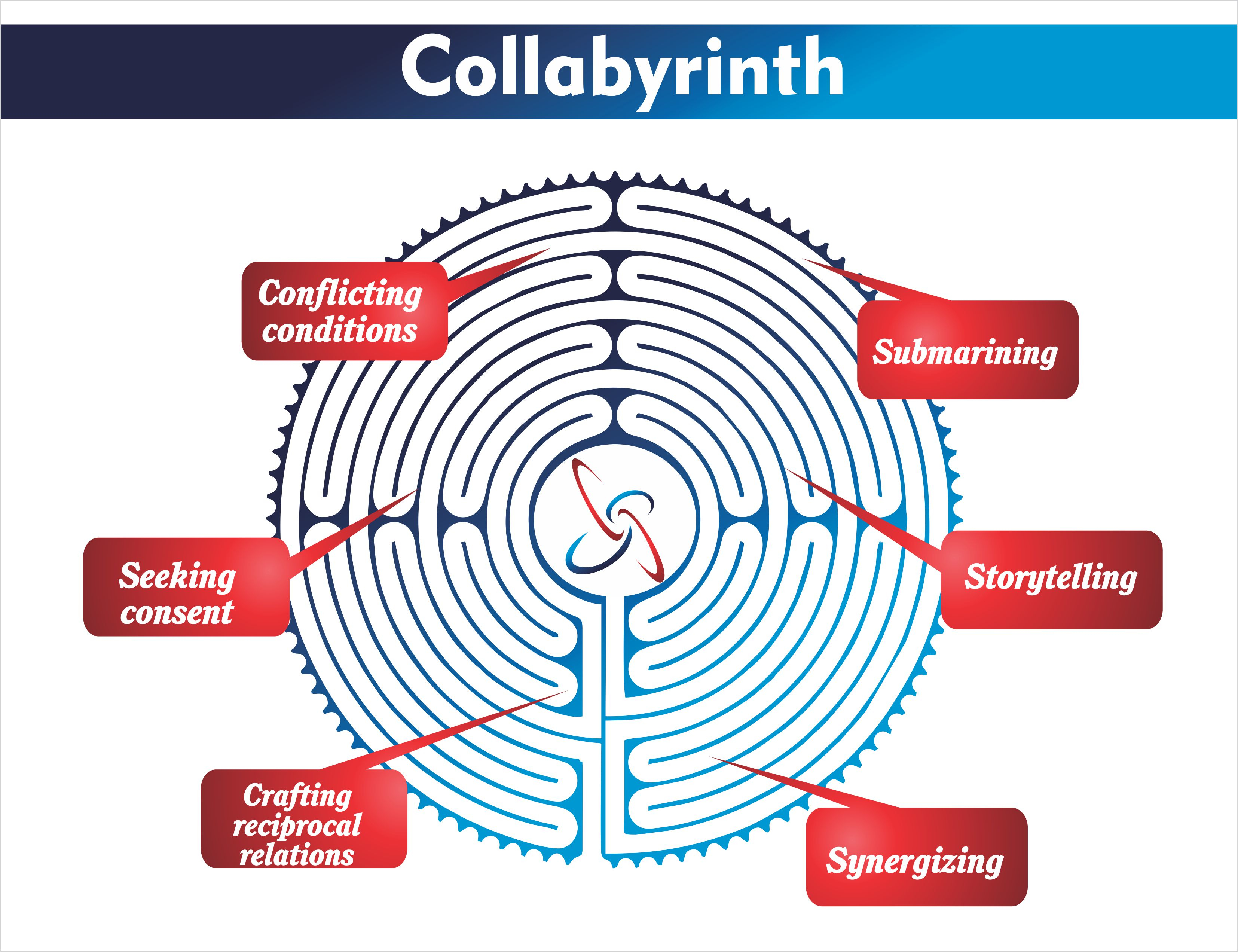
Published in the PMI Netherlands Newsletter
In the execution of a project, collaboration is inevitable. During a four-year research project I studied how collaboration became manifest in the everyday work life of project participants in the Panama Canal Expansion Program. The journey towards developing a collaborative relationship can be seen as a collabyrinth. This neology of ‘collaboration’ and ‘labyrinth’ reflects the complicatedness of collaboration.
Project organizations generally consist of employees residing from various specialized organizations bringing numerous cultural differences and similarities, distinctive practices and differing values and interests for participation to the work floor. A collabyrinth demonstrates the complexity of working together across cultures and illustrates the practices of collaboration that emerged in the project organization under study.
In the Panama Canal Expansion Program I found a wide variety of practices of collaboration. ‘Submarining’, for example, illustrates that actors recur to traditional behavior and mark boundaries based upon cultural aspects and project office locations. These diminishing practices led to separation and fragmentation among the project participants and created distance between them. Nevertheless, as project participants came to recognize the need for a collaborative relationship, several amplifying practices evolved. As such, ‘crafting reciprocal relations’ expresses the willingness to collaborate and is enacted in activities that bridge the cultural divide so that, despite the complexities, people developed ways to enhance a collaborative relationship.
The study stresses the importance of highlighting culture and collaboration on the project management agenda. Unraveling the cultural complexity helps us to understand what is actually going on in a project organization and to obtain better insight into the lived experiences of project participants.
Even before signing starting a project, parties can conduct a ‘culture scan’. Identifying the cultural differences and similarities at an early stage of collaboration, decreases the risk of a painful culture clash during the execution of a project. A better understanding of the cultural aspects that come together in a project organization supports project participants in accepting and anticipating on cultural aspects like organizational behavior, work ethics and meeting styles. Hence, explicit attention to cultural aspects in the project environment increases collaboration among its project participants and will, in turn, affect the project’s end result.







